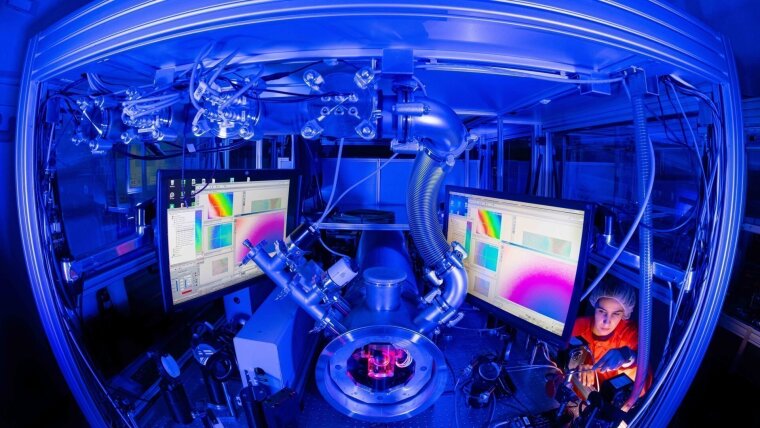
- Light
Published: | By: Ute Schönfelder
Source article
The interaction between high-intensity, ultrashort laser pulses and solids has opened up significant technological opportunities in recent years. Laser ablation, for example, allows high-precision materials processing, thereby facilitating the miniaturization of components in medical and telecommunications technologies. The synergy between intense laser pulses and solids can also be used to produce accelerated ion beams, which could serve applications in cancer treatment, fusion energy research and non-destructive analysis of cultural artefacts.
“There are, however, still a number of challenges to overcome before these and other industrial and medical applications can be made available,” says Prof. Dr Malte Kaluza of Friedrich Schiller University Jena. An expert in relativistic laser physics, Kaluza explains that the foremost question facing researchers is how exactly plasma is generated on the surface of a material, which is crucial for both materials processing and for producing ion beams. In a current study, Prof. Kaluza and his team took a significant step towards explaining this laser-induced solid-to-plasma transition. The researchers outlined their findings in an article in the “Light: Science & Applications” journal.
From a cold solid to a high-temperature plasma
The researchers use the term “plasma” to describe a high-energy phase in which electrons from the atoms that make up the solid object are ripped out, thereby ionizing the material. When an energetic, ultrashort laser pulse meets a solid surface, this surface is heated to several millions of degrees and the electrons are stripped off the atoms in a sort of avalanche, forming a “cloud” than becomes increasingly dense. “All of this happens in less than a picosecond—one billionth of a second,” says Kaluza. This, he explains, is precisely why we still do not fully understand the complex processes involved in plasma formation. “Experiments have barely been able to examine this initial phase of the interaction between the laser pulse and the material, which is why the majority of numerical models that describe this type of interaction have been forced to make rather vague assumptions about the ultrafast solid-to-plasma transition.”
In the recently published article, the team of researchers from the University of Jena and the Helmholtz Institute Jena teamed up with researchers from Lyon, Bordeaux and Paris to introduce an optical “single-shot probing” technique. This technique fully visualizes the process and thereby makes it possible to observe the transition from a solid object to hot plasma. The starting point is a nanometre-thin, transparent carbon foil, which is then exposed to the powerful POLARIS laser pulses. These so-called pump pulses generate the plasma on the foil. The initially transparent foil becomes opaque due to the formation of the increasingly dense cloud of free electrons.
“We’re now able to observe this process in an experiment,” explains Dr Yasmina Azamoum, the lead author of the article. “We achieve this by using an ultrashort probe pulse with a broad optical spectrum.” This probe pulse is configured in such a way that some colours are delayed while others advanced with respect to each other (giving the pulse a so-called “chirp”). This increases the duration of the pulse. “Now, if we direct this probe pulse at the foil, the surface of the foil interacts with the pump pulse and we can observe the development of plasma over time. The various phases in the development of plasma are imprinted in the different colours of the transmitted probe pulse, which we direct into a spectrometer behind the foil so that we can separate the different colours.”
Two-stage model explains the mechanism of plasma formation
The Jena-based team and their colleagues in France worked together to develop a two-stage interaction model in order to interpret the transmission profiles measured by this method. The first stage examines the ionization dynamics in a solid state, while the second stage examines the heating and expansion in a plasma state. “This means that, for the first time, we can record the processes at work with high temporal and spatial resolution,” says Kaluza, emphasizing the importance of this breakthrough. The researchers expect this will benefit methods used in ultrafast laser processing of materials as well as laser-accelerated ion technology.
Original publication:
Yasmina Azamoum et al. Optical Probing of Ultrafast Laser-Induced Solid-to-Over-dense-Plasma Transitions, Light: Science & Applications (2024), https://www.nature.com/articles/s41377-024-01444-yExternal link
07743 Jena Google Maps site planExternal link